Time-Series Analysis of Oxygen as an Important Environmental Parameter for Monitoring Diversity Hotspot Ecosystems: An Example of a River Sinking into the Karst Underground
Abstract
1. Introduction
2. Materials and Methods
2.1. Site Description
2.2. Data for Analyses
2.3. Data Analyses
3. Results and Discussion
3.1. Environmental Conditions in the Pivka River
3.2. Relations between River Conditions and Atmospheric Parameters
3.3. Time-Series Analyses
3.4. Predictions and Perspectives
4. Conclusions
Author Contributions
Funding
Institutional Review Board Statement
Informed Consent Statement
Data Availability Statement
Acknowledgments
Conflicts of Interest
References
- Yan, T.; Shen, S.L.; Zhou, A. Indices and models of surface water quality assessment: Review and perspectives. Environ. Pollut. 2022, 308, 119611. [Google Scholar] [CrossRef]
- Breitburg, D.; Levin, L.A.; Oschlies, A.; Grégoire, M.; Chavez, F.P.; Conley, D.J.; Garçon, V.; Gilbert, D.; Gutiérrez, D.; Isensee, K.; et al. Declining oxygen in the global ocean and coastal waters. Science 2018, 359, eaam7240. [Google Scholar] [CrossRef] [PubMed]
- Wurtsbaugh, W.; Paerl, H.; Dodds, W. Nutrients, eutrophication and harmful algal blooms along the freshwater to marine continuum. Wiley Interdiscip. Rev. Water 2019, 6, e1373. [Google Scholar] [CrossRef]
- Banti, V.; Giuntoli, B.; Gonzali, S.; Loreti, E.; Magneschi, L.; Novi, G.; Paparelli, E.; Parlanti, S.; Pucciariello, C.; Santaniello, A.; et al. Low oxygen response mechanisms in green organisms. Int. J. Mol. Sci. 2013, 14, 4734–4761. [Google Scholar] [CrossRef] [PubMed]
- Malard, F.; Hervant, F. Oxygen supply and the adaptations of animals in groundwater. Freshw. Biol. 1999, 41, 1–30. [Google Scholar] [CrossRef]
- Issartel, J.; Hervant, F.; de Fraipont, M.; Clobert, J.; Voituron, Y. High anoxia tolerance in the subterranean salamander Proteus anguinus without oxidative stress nor activation of antioxidant defenses during reoxygenation. J. Comp. Physiol. B Biochem. Syst. Environ. Physiol. 2009, 179, 543–551. [Google Scholar] [CrossRef] [PubMed]
- García, H.; Gordon, L. Oxygen solubility in seawater—Better fitting equations. Limnol. Oceanogr. 1992, 37, 1307–1312. [Google Scholar] [CrossRef]
- Ansa-Asare, O.; Marr, I.; Cresser, M. Evaluation of modelled and measured patterns of dissolved oxygen in a freshwater lake as an indicator of the presence of biodegradable organic pollution. Water Res. 2000, 34, 1079–1088. [Google Scholar] [CrossRef]
- Culver, D.; Sket, B. Hotspots of subterranean biodiversity in caves and wells. J. Cave Karst Stud. 2000, 62, 11–17. [Google Scholar]
- Zagmajster, M.; Polak, S.; Fišer, C. Postojna-Planina cave system in Slovenia, a hotspot of subterranean biodiversity and a cradle of speleobiology. Diversity 2021, 13, 271. [Google Scholar] [CrossRef]
- Cox, B. A review of currently available in-stream water-quality models and their applicability for simulating dissolved oxygen in lowland rivers. Sci. Total Environ. 2003, 314, 335–377. [Google Scholar] [CrossRef] [PubMed]
- Elkiran, G.; Nourani, V.; Abba, S.I.; Abdullahi, J. Artificial intelligence-based approaches for multi-station modelling of dissolve oxygen in river. Glob. J. Environ. Sci. Manag. 2018, 4, 439–450. [Google Scholar] [CrossRef]
- Banerjee, A.; Chakrabarty, M.; Rakshit, N.; Bhowmick, A.; Ray, S. Environmental factors as indicators of dissolved oxygen concentration and zooplankton abundance: Deep learning versus traditional regression approach. Ecol. Indic. 2019, 100, 99–117. [Google Scholar] [CrossRef]
- Ouma, Y.; Okuku, C.; Njau, E. Use of artificial neural networks and multiple linear regression model for the prediction of dissolved oxygen in rivers: Case study of hydrographic basin of River Nyando, Kenya. Complexity 2020, 2020, 9570789. [Google Scholar] [CrossRef]
- Buser, S.; Grad, K.; Pleničar, M. Basic Geological Map of SFRY 1:100.000, Sheet Postojna; Federal Geological Survey: Belgrade, Yugoslavia, 1967. [Google Scholar]
- Mulec, J.; Petrič, M.; Koželj, A.; Brun, C.; Batagelj, E.; Hladnik, A.; Holko, L. A multiparameter analysis of environmental gradients related to hydrological conditions in a binary karst system (underground course of the Pivka River, Slovenia). Acta Carsol. 2019, 48, 313–327. [Google Scholar] [CrossRef]
- McKinney, W. Data structures for statistical computing in python. In Proceedings of the 9th Python in Science Conference, Austin, TX, USA, 28 June–3 July 2010; Volume 445, pp. 51–56. [Google Scholar]
- Harris, C.R.; Millman, K.J.; Van Der Walt, S.J.; Gommers, R.; Virtanen, P.; Cournapeau, D.; Wieser, E.; Taylor, J.; Berg, S.; Smith, N.J.; et al. Array programming with NumPy. Nature 2020, 585, 357–362. [Google Scholar] [CrossRef]
- Virtanen, P.; Gommers, R.; Oliphant, T.E.; Haberland, M.; Reddy, T.; Cournapeau, D.; Burovski, E.; Peterson, P.; Weckesser, W.; Bright, J.; et al. SciPy 1.0: Fundamental algorithms for scientific computing in Python. Nat. Methods 2020, 17, 261–272. [Google Scholar] [CrossRef] [PubMed]
- Pearson, K. VII. Note on regression and inheritance in the case of two parents. Proc. R. Soc. Lond. 1895, 58, 240–242. [Google Scholar]
- Seabold, S.; Perktold, J. Statsmodels: Econometric and statistical modeling with python. In Proceedings of the 9th Python in Science Conference, Austin, TX, USA, 28 June–3 July 2010; Volume 57, pp. 92–96. [Google Scholar]
- Hunter, J.D. Matplotlib: A 2D graphics environment. Comput. Sci. Eng. 2007, 9, 90–95. [Google Scholar] [CrossRef]
- Waskom, M.L. Seaborn: Statistical data visualization. J. Open Source Softw. 2021, 6, 3021. [Google Scholar] [CrossRef]
- Millis, T.C. A Very British Affair: Six Britons and the Development of Time Series Analysis during the 20th Century; Palgrave Macmillan: London, UK, 2013; pp. 161–215. [Google Scholar]
- Dickey, D.; Fuller, W. Distribution of the estimators for autoregressive time series with a unit root. J. Am. Stat. Assoc. 1979, 74, 427–431. [Google Scholar] [CrossRef]
- Lütkepohl, H. New Introduction to Multiple Time Series Analysis; Springer Science & Business Media: Berlin, Germany, 2005; p. 764. [Google Scholar]
- Akaike, H. A new look at the statistical model identification. IEEE Trans. Autom. Contr. 1974, 19, 716–723. [Google Scholar] [CrossRef]
- Zhu, S.; Bonacci, O.; Oskoru, D.; Hadzima-Nyarko, M.; Wu, S. Long term variations of river temperature and the influence of air temperature and river discharge: Case study of Kupa River watershed in Croatia. J. Hydrol. Hydromech. 2019, 67, 305–313. [Google Scholar] [CrossRef]
- Zhu, N.; Ji, X.; Tan, J.; Jiang, Y.; Guo, Y. Prediction of dissolved oxygen concentration in aquatic systems based on transfer learning. Comput. Electron. Agric. 2021, 180, 105888. [Google Scholar] [CrossRef]
- Portielje, R.; Lijklema, L. The effect of reaeration and benthic algae on the oxygen balance of an artificial ditch. Ecol. Modell. 1995, 79, 35–48. [Google Scholar] [CrossRef]
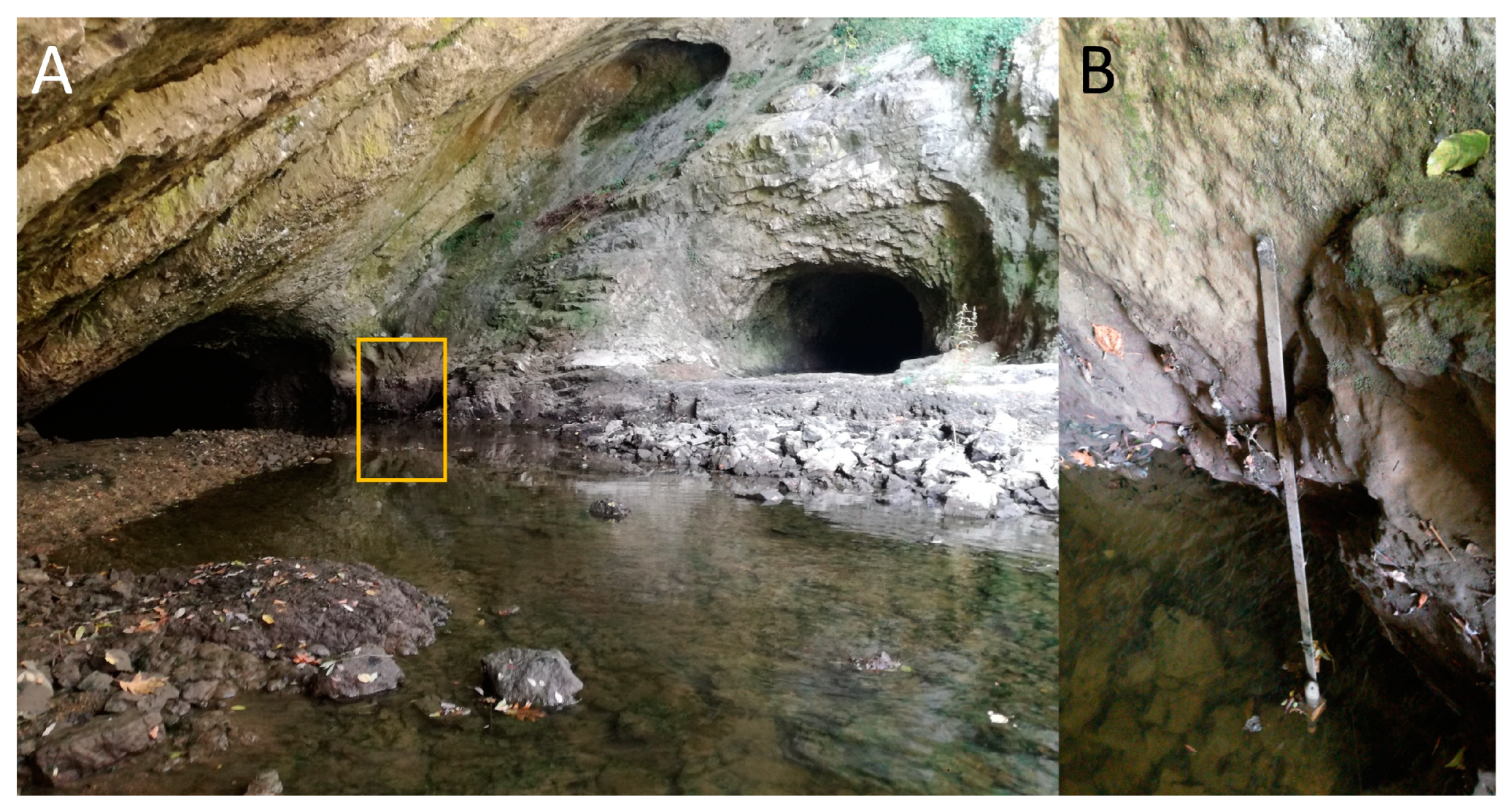
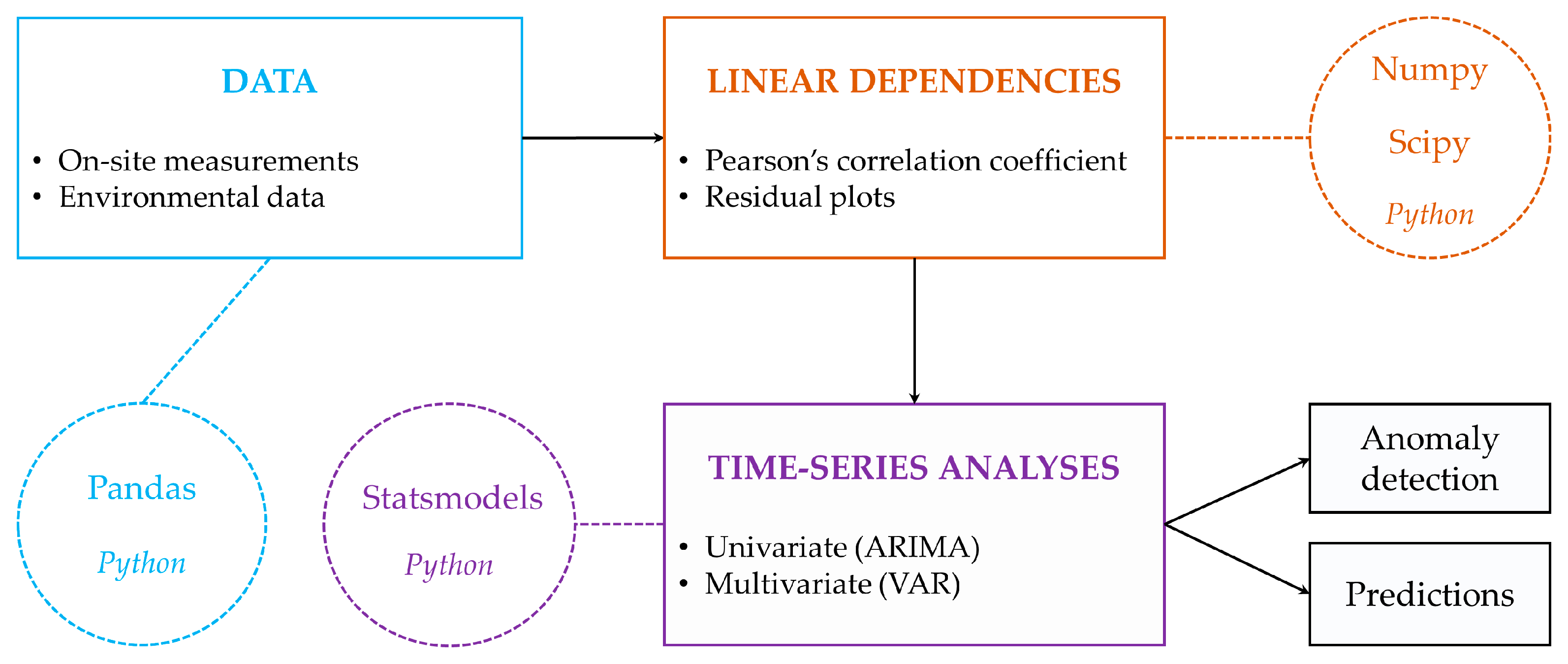
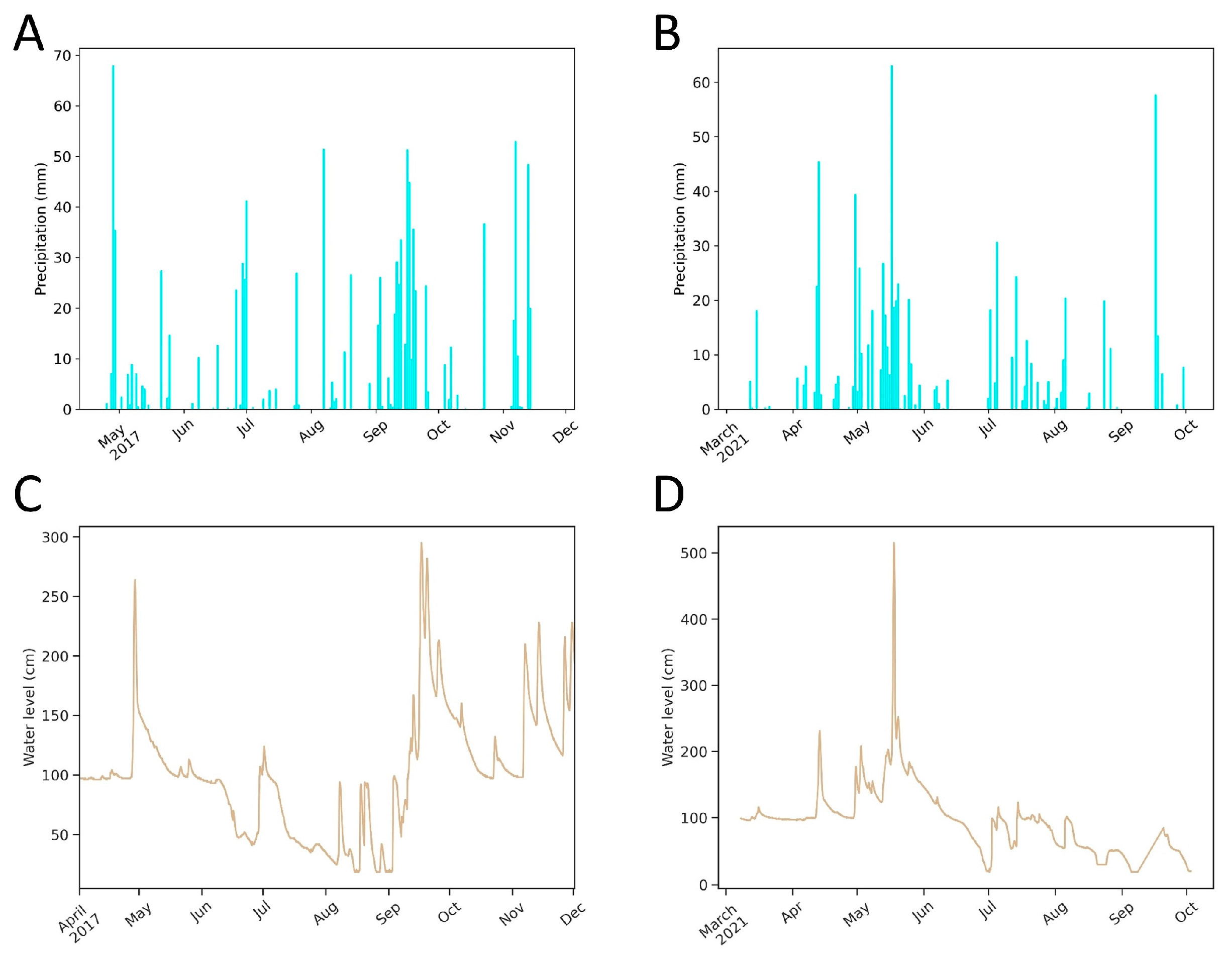
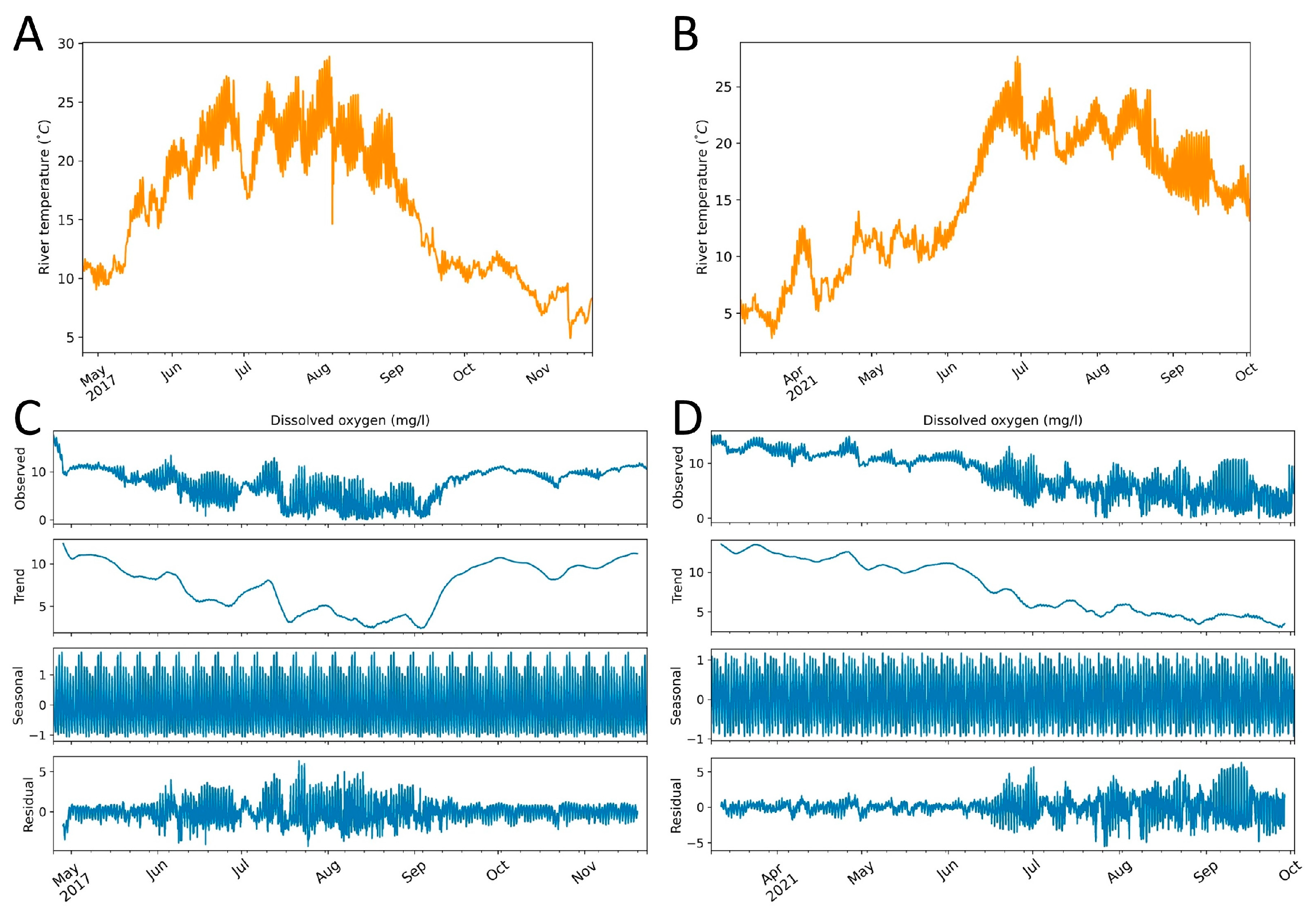
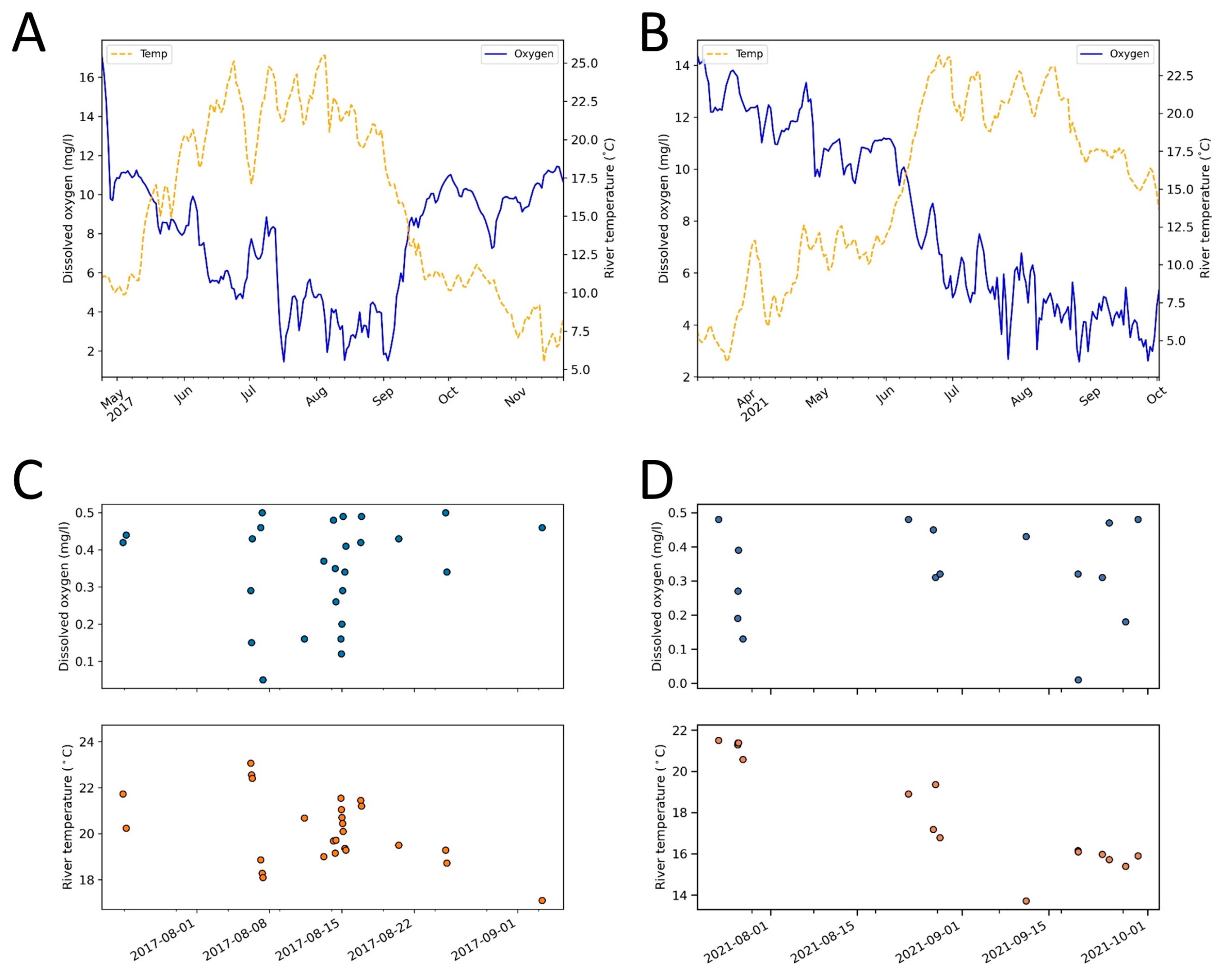
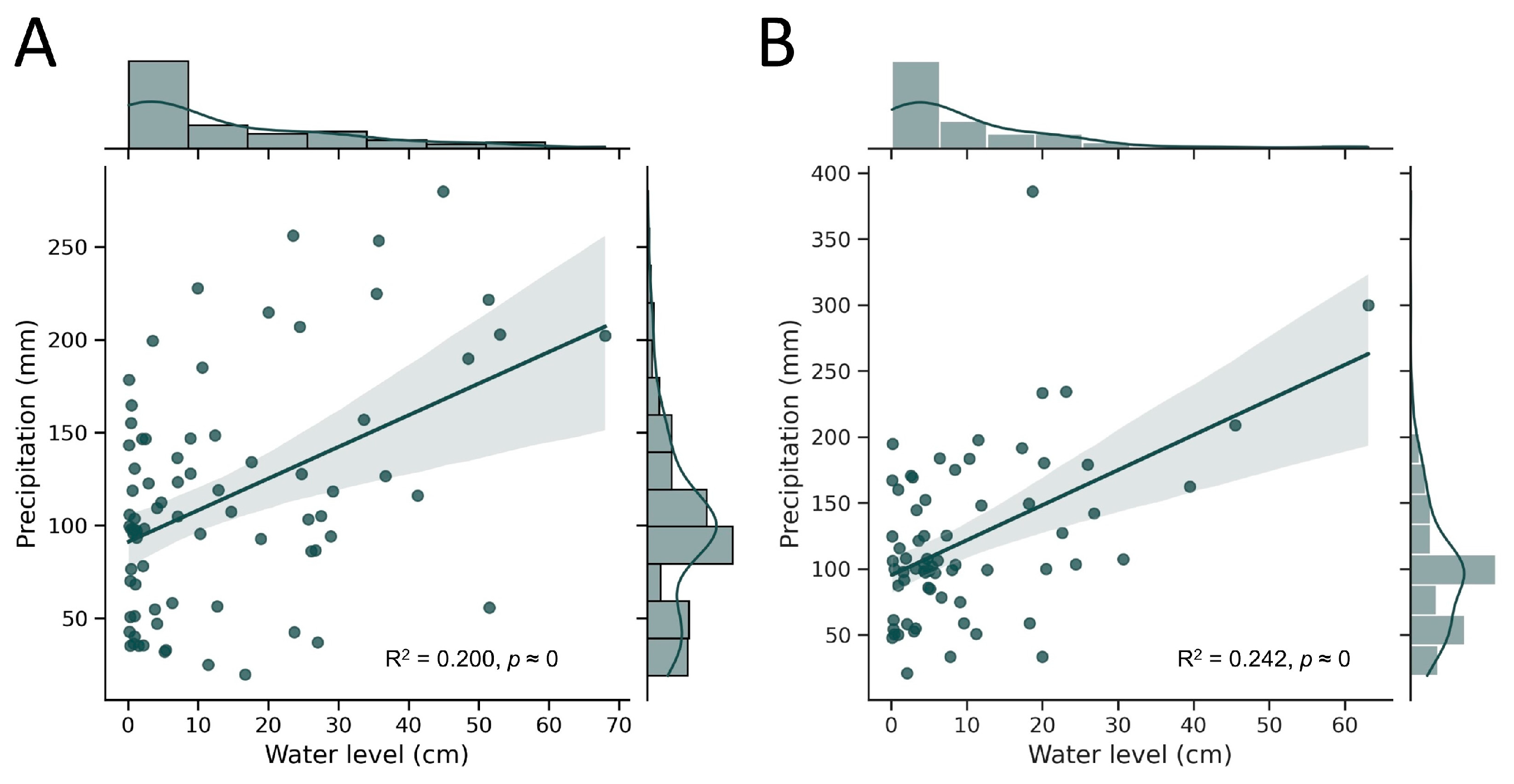
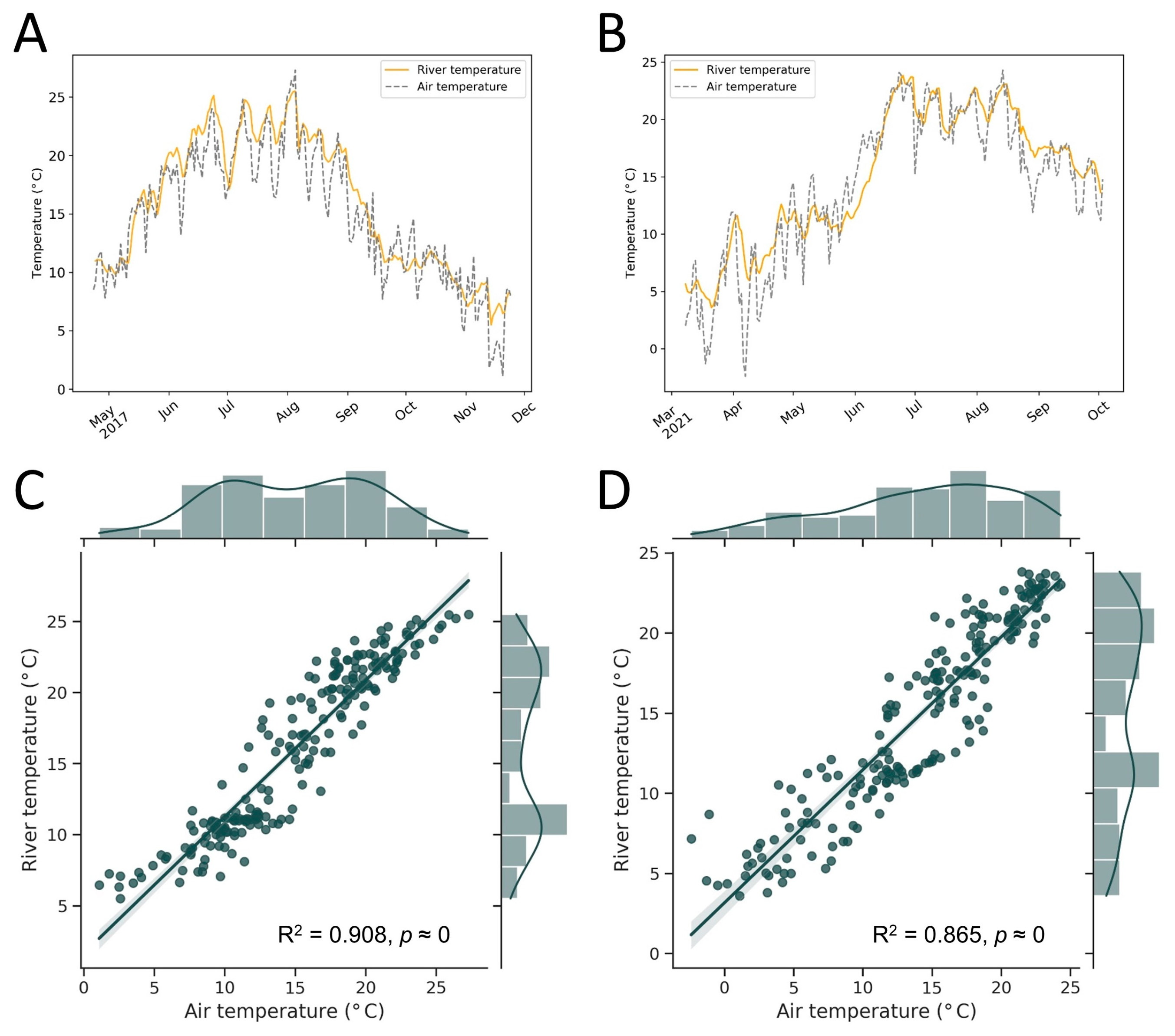
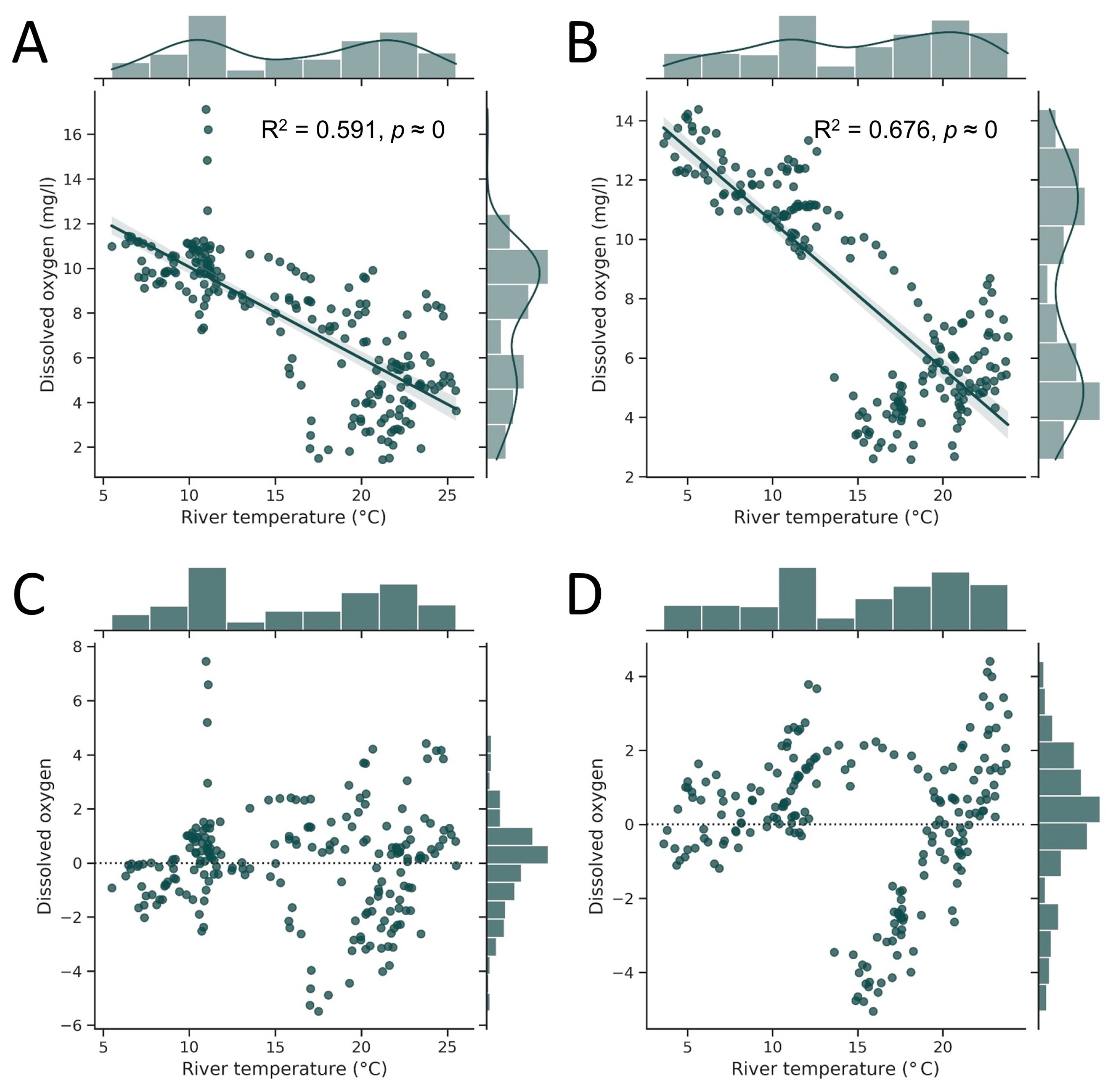
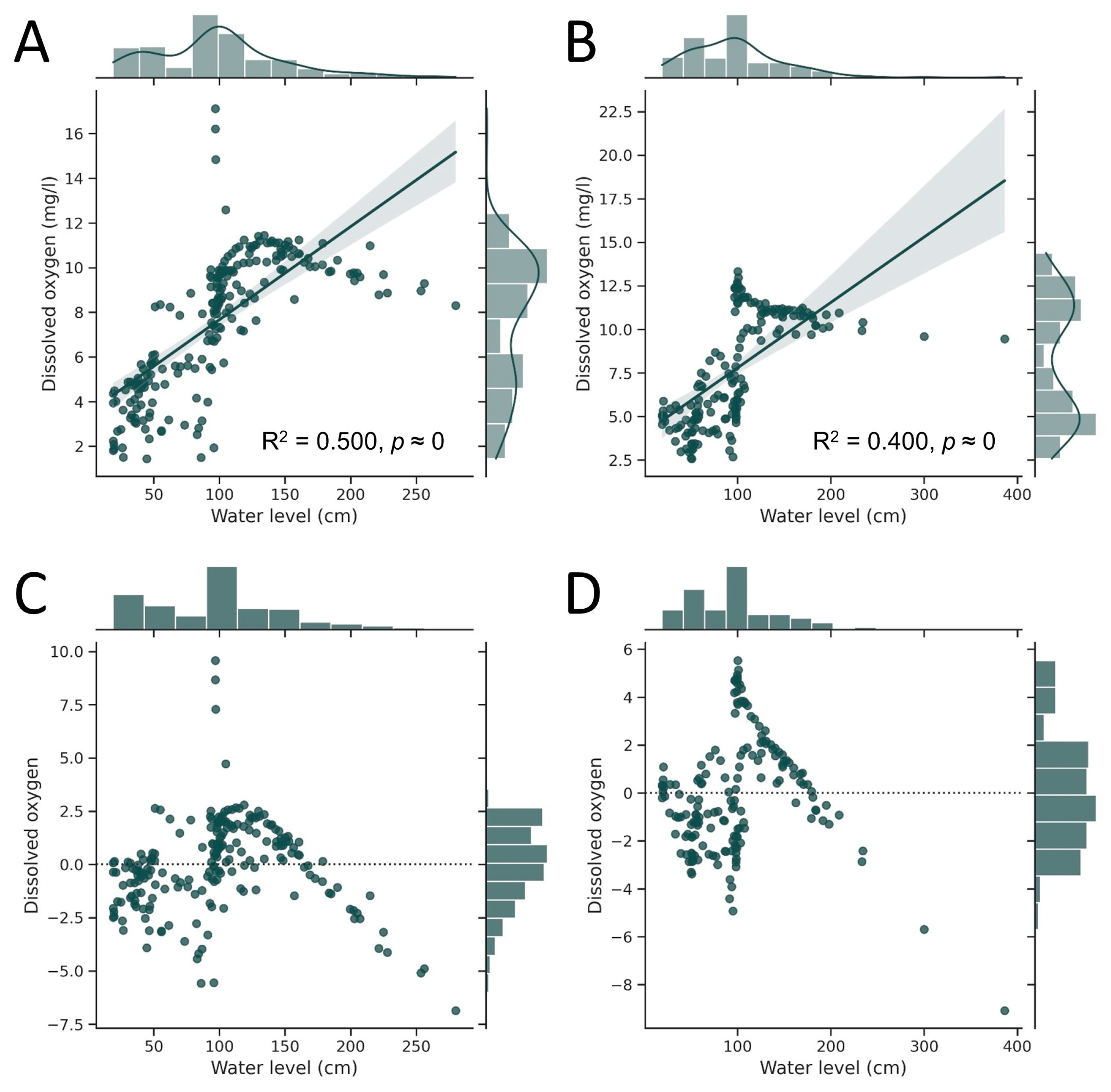

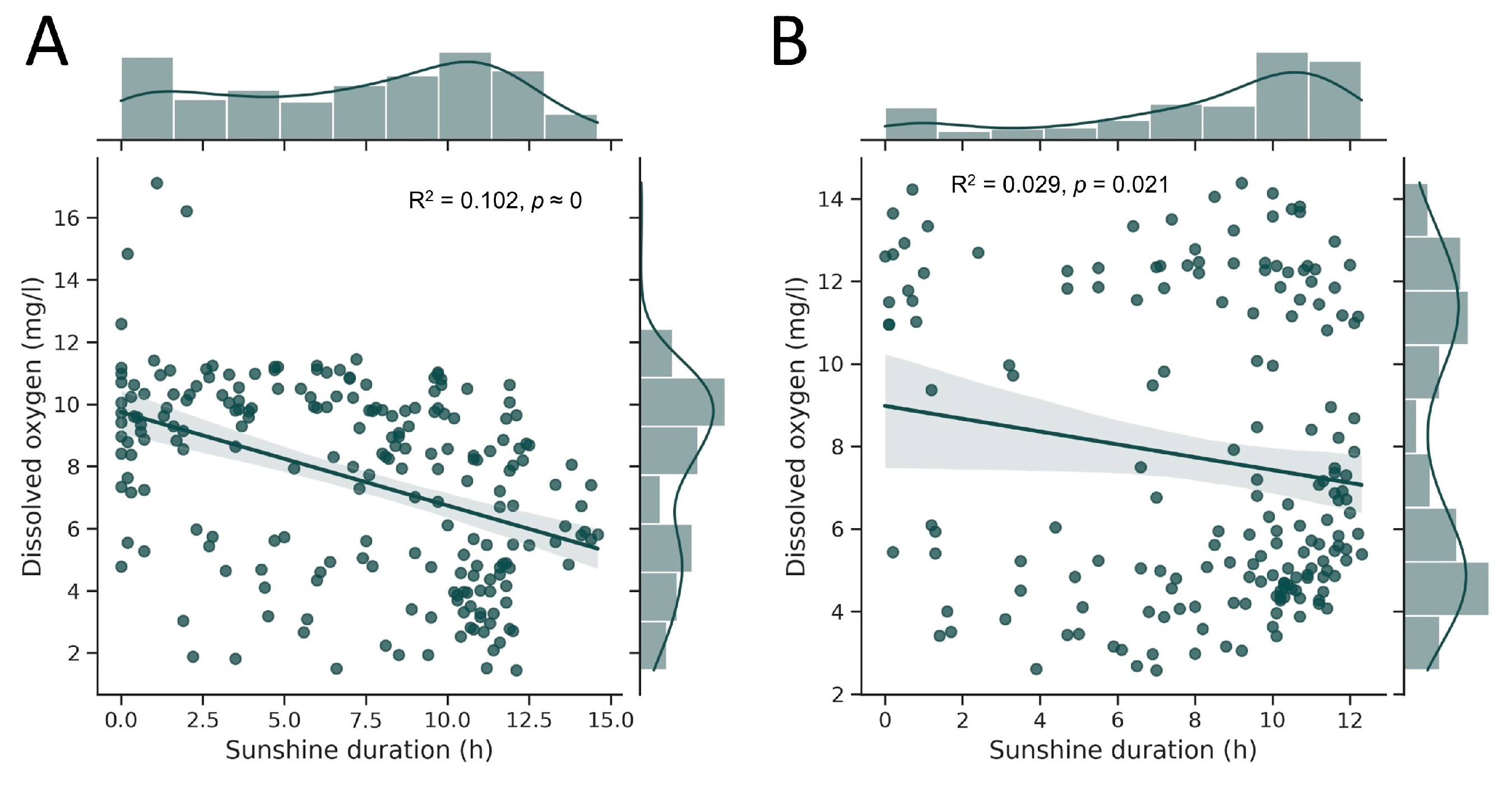

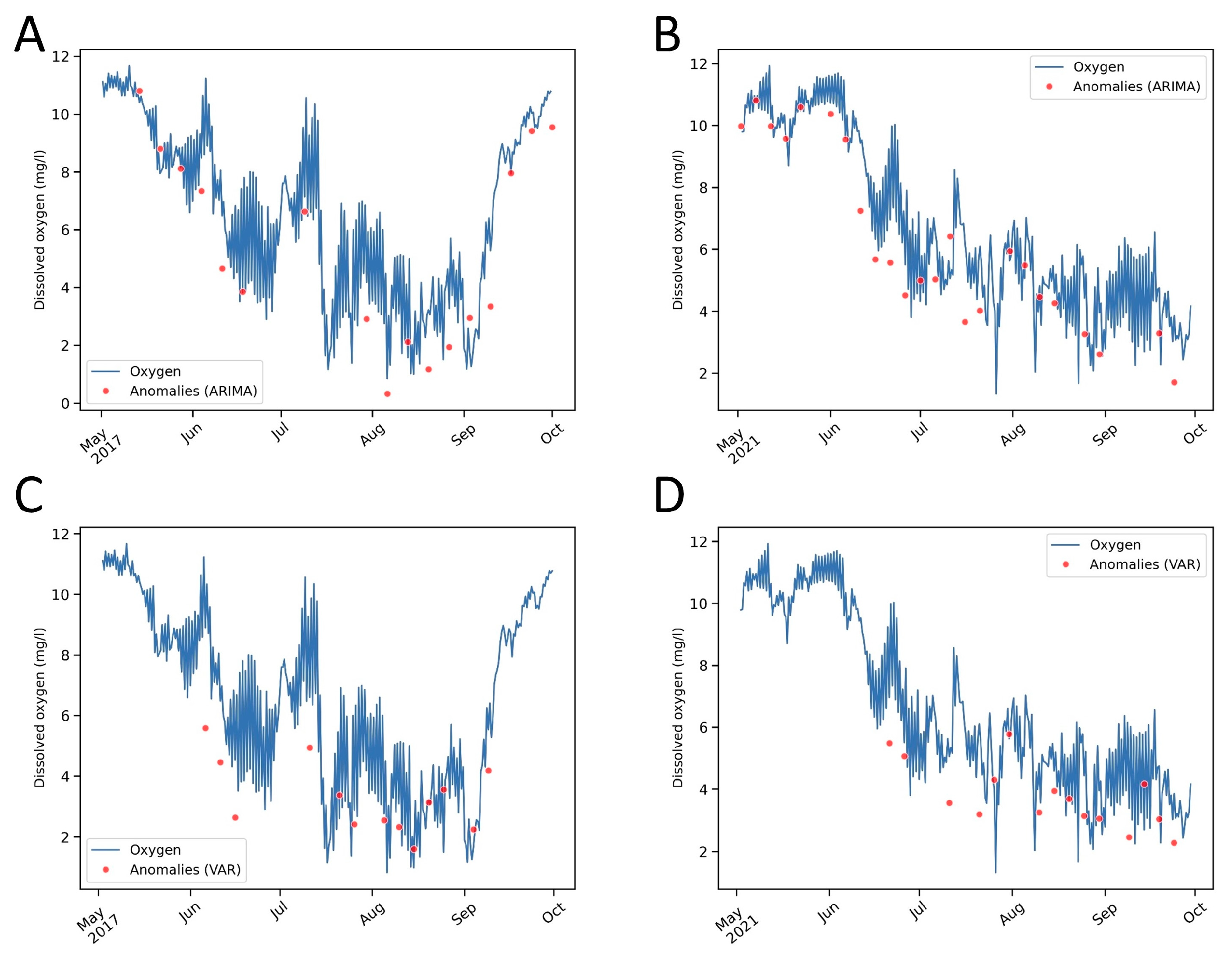
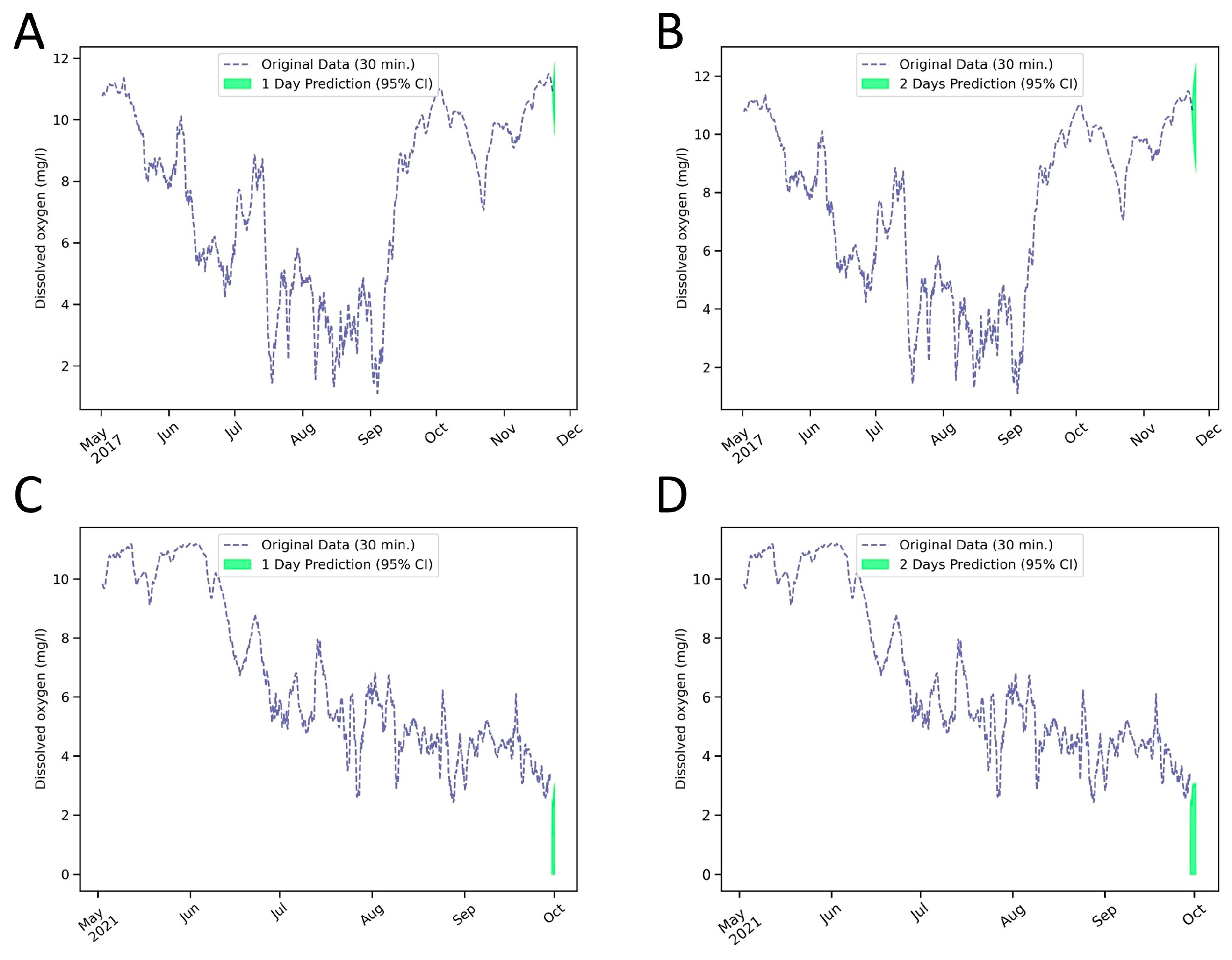
Disclaimer/Publisher’s Note: The statements, opinions and data contained in all publications are solely those of the individual author(s) and contributor(s) and not of MDPI and/or the editor(s). MDPI and/or the editor(s) disclaim responsibility for any injury to people or property resulting from any ideas, methods, instructions or products referred to in the content. |
© 2023 by the authors. Licensee MDPI, Basel, Switzerland. This article is an open access article distributed under the terms and conditions of the Creative Commons Attribution (CC BY) license (https://creativecommons.org/licenses/by/4.0/).
Share and Cite
Bhattacharyya, S.; Mulec, J.; Oarga-Mulec, A. Time-Series Analysis of Oxygen as an Important Environmental Parameter for Monitoring Diversity Hotspot Ecosystems: An Example of a River Sinking into the Karst Underground. Diversity 2023, 15, 156. https://doi.org/10.3390/d15020156
Bhattacharyya S, Mulec J, Oarga-Mulec A. Time-Series Analysis of Oxygen as an Important Environmental Parameter for Monitoring Diversity Hotspot Ecosystems: An Example of a River Sinking into the Karst Underground. Diversity. 2023; 15(2):156. https://doi.org/10.3390/d15020156
Chicago/Turabian StyleBhattacharyya, Saptashwa, Janez Mulec, and Andreea Oarga-Mulec. 2023. "Time-Series Analysis of Oxygen as an Important Environmental Parameter for Monitoring Diversity Hotspot Ecosystems: An Example of a River Sinking into the Karst Underground" Diversity 15, no. 2: 156. https://doi.org/10.3390/d15020156
APA StyleBhattacharyya, S., Mulec, J., & Oarga-Mulec, A. (2023). Time-Series Analysis of Oxygen as an Important Environmental Parameter for Monitoring Diversity Hotspot Ecosystems: An Example of a River Sinking into the Karst Underground. Diversity, 15(2), 156. https://doi.org/10.3390/d15020156






